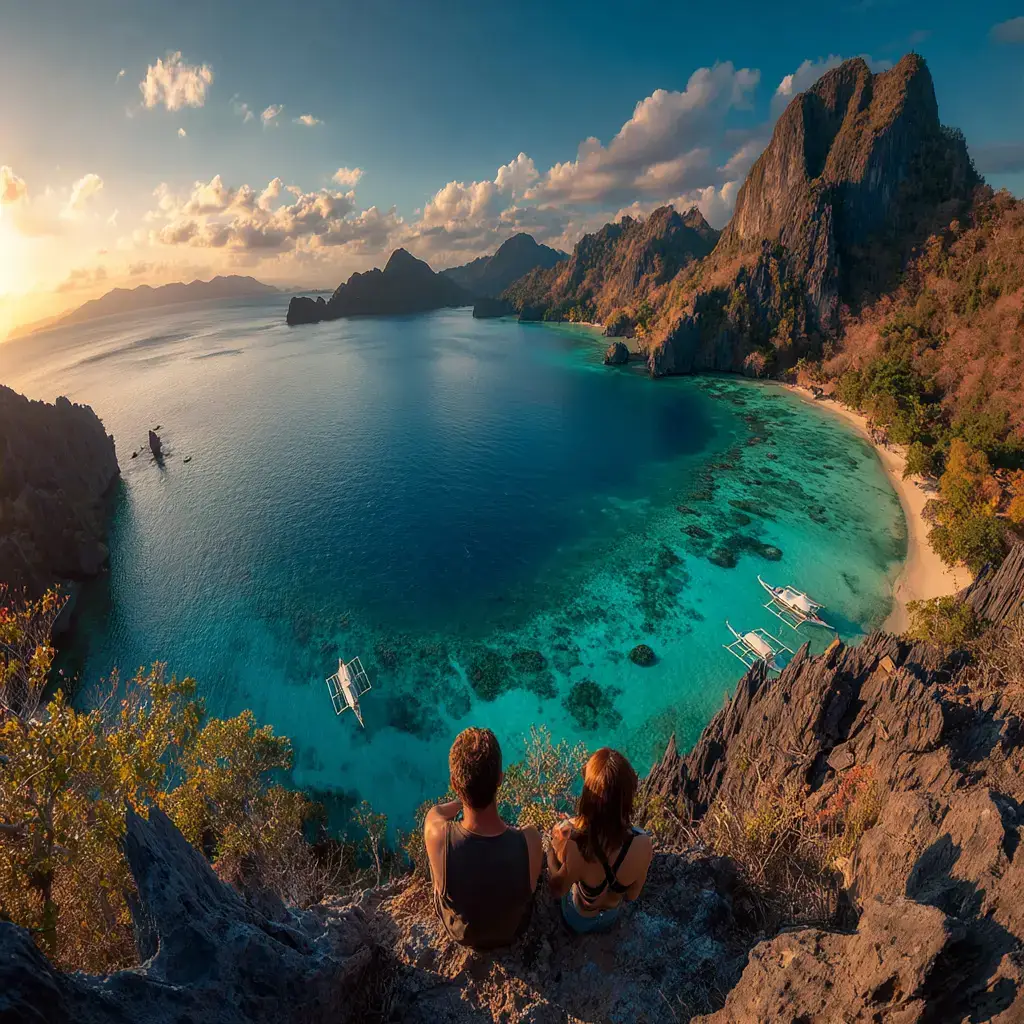
So, you’re scrolling through Google Flights again, daydreaming of escaping your gray cubicle for something… bluer. Maybe with a coconut drink in hand, feet buried in warm sand, and the sound of waves massaging your soul. Well, spoiler alert: the Philippines is your dream destination, and it’s not even trying that hard. Let’s dive into 10 (hilariously honest) reasons why you should visit the Philippines and add a trip to the Philippines to your passport stamps. Consider this article your personal Philippines travel guide, as we will be highlighting some of the best tourist spots around the Philippines!
1. Because 7,641 Islands Aren’t Going to Explore Themselves
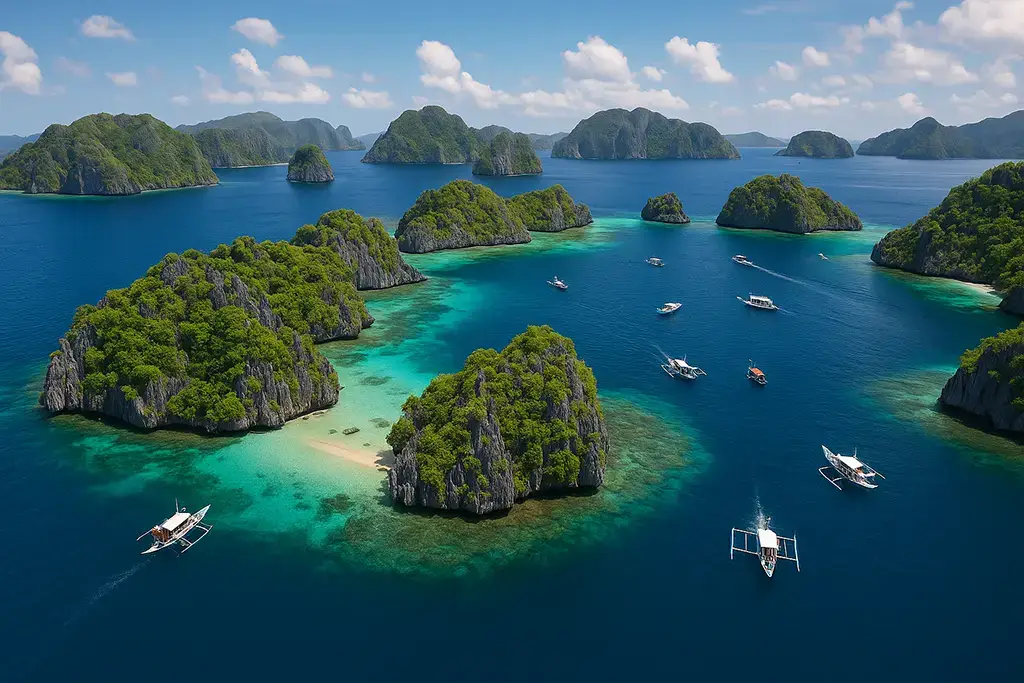
Island Hopping Madness
When you’re looking into the Philippine islands to visit, you’re spoiled for choice—seriously, more than 7,600 islands! Island hopping across top places in the Philippines, like Palawan, Siargao, and Bohol, is required.
Each island offers something different: quiet retreats in hidden coves, party vibes in Boracay, and scenic views that make your camera blush. This is an essential reason to visit the Philippines for beach lovers and adventure seekers alike.
Hidden Gems Galore
Sure, you’ve heard of Palawan and Cebu, but what about lesser-known gems like Camiguin (hello, volcanoes!) or Batanes, which honestly looks like it belongs in a “Lord of the Rings” movie? Exploring these under-the-radar spots feels like discovering treasure, minus the pirates and questionable facial hair.
The Philippines is one big treasure map. X marks… anywhere with a beach.
2. The Beaches Will Ruin Other Beaches for You
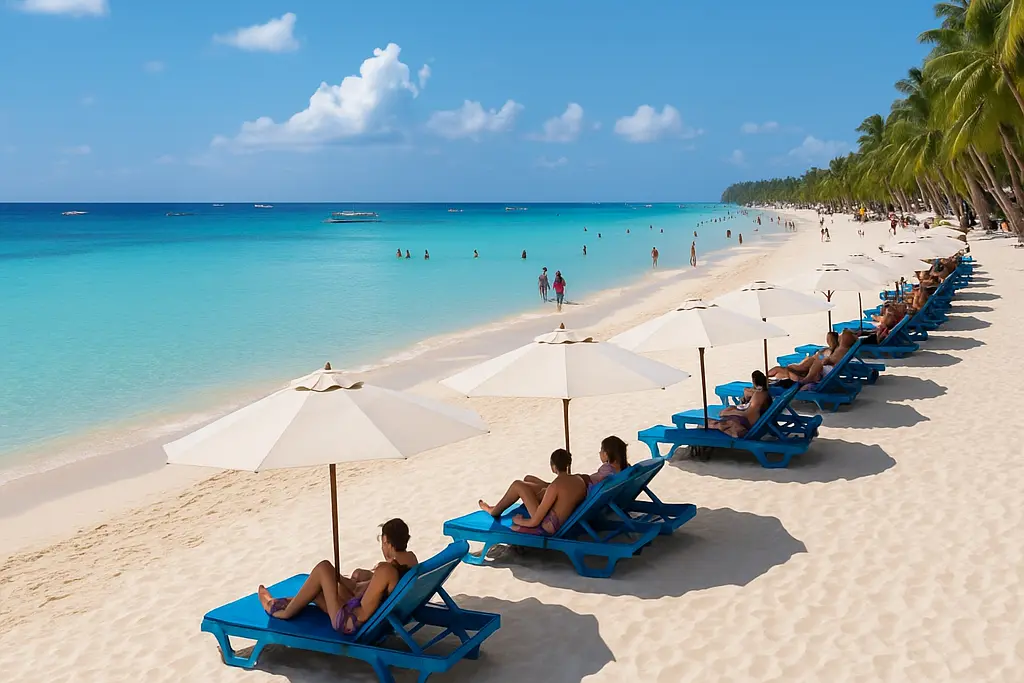
Boracay’s Powdered-Sugar Sand
If you think you’ve seen great beaches, wait until you try the best beaches in the Philippines. Boracay? It’s got sand so fine that it feels like powdered sugar. Palawan’s secret lagoons? Clear, blue, and beautifully Instagram‑ready.
This is the kind of paradise that delivers on the promise of the Philippines travel guide magic—seriously, it sets the bar ridiculously high for other beaches worldwide.
Palawan’s Secret Lagoons
Now, if Boracay is the diva of beaches, Palawan is the mysterious beauty in the corner. Think towering limestone cliffs, hidden lagoons you have to kayak into like some Indiana Jones scene, and underwater views that’ll make you feel like Ariel.
El Nido and Coron are Palawan’s crown jewels, with water so blue it makes Fiji jealous. Pro tip: bring waterproof everything – your camera, your phone, your spirit – because you won’t want to miss a second of this aquatic wonderland.
3. Filipinos Might Be the Friendliest People on Earth

Smiles That Can Melt Your Heart
Ever wondered why visit the Philippines? It starts with the people. Filipinos are famous for their friendly smiles, “Have you eaten?” (Spoiler: this is how they say “hi.”) greetings, and hospitality that’ll make your grandma jealous. Here’s a scientific fact (ok, maybe not scientific, but observational): it is physically impossible to stay grumpy around Filipinos.
Whether you’re asking for directions or joining a random backyard karaoke session, locals go out of their way to help. It’s a top reason to travel to the Philippines and make lifelong friends without even trying.
Hospitality Level: Grandma On Your Birthday
Filipino hospitality is legendary. When you visit someone’s home, you’re treated like royalty. And by royalty, I mean they’ll feed you until you physically can’t move. Then feed you more. “Have you eaten?” becomes the unofficial greeting, and the answer better be “not yet,” or they’ll take it as a personal challenge to fatten you up.
Even budget travelers can’t escape the kindness, from free meals to genuine connections, you’ll leave with a full belly and a whole heart.
4. Food That’ll Have You Questioning Your Life Choices

Adobo – The National Hug in a Bowl
If you search Filipino food must‑try, you’ll hit jackpot after jackpot: adobo, sinigang, halo‑halo, lechon, and more.
- Adobo: the national dish that tastes like a warm, savory hug in a bowl.
- Street food like balut, kwek‑kwek, and isaw: dare your taste buds to try them.
This culinary adventure is essential for anyone wondering why visiting the Philippines is worth the trip, and your diet can be postponed.
But wait, there’s more. Halo-halo, lechon, kare-kare, sinigang – every dish comes with bold flavors and generous portions. Diet? Not in this country, my friend.
Street Food Roulette – Are You Brave Enough?
You haven’t truly visited the Philippines until you’ve tried street food with names that sound like dares—ever eaten balut? It’s a fertilized duck egg, and yes, it’s crunchy. You’ll either love it or gain a lifetime story.
Then there’s isaw (grilled chicken intestines), kwek-kwek (orange battered quail eggs), and fish balls sold from carts with sauce that may or may not be magic. It’s a flavor adventure – bring an open mind and a strong stomach.
5. Adventure Activities That’ll Get Your Heart Racing (And Possibly Your Mom Worried)
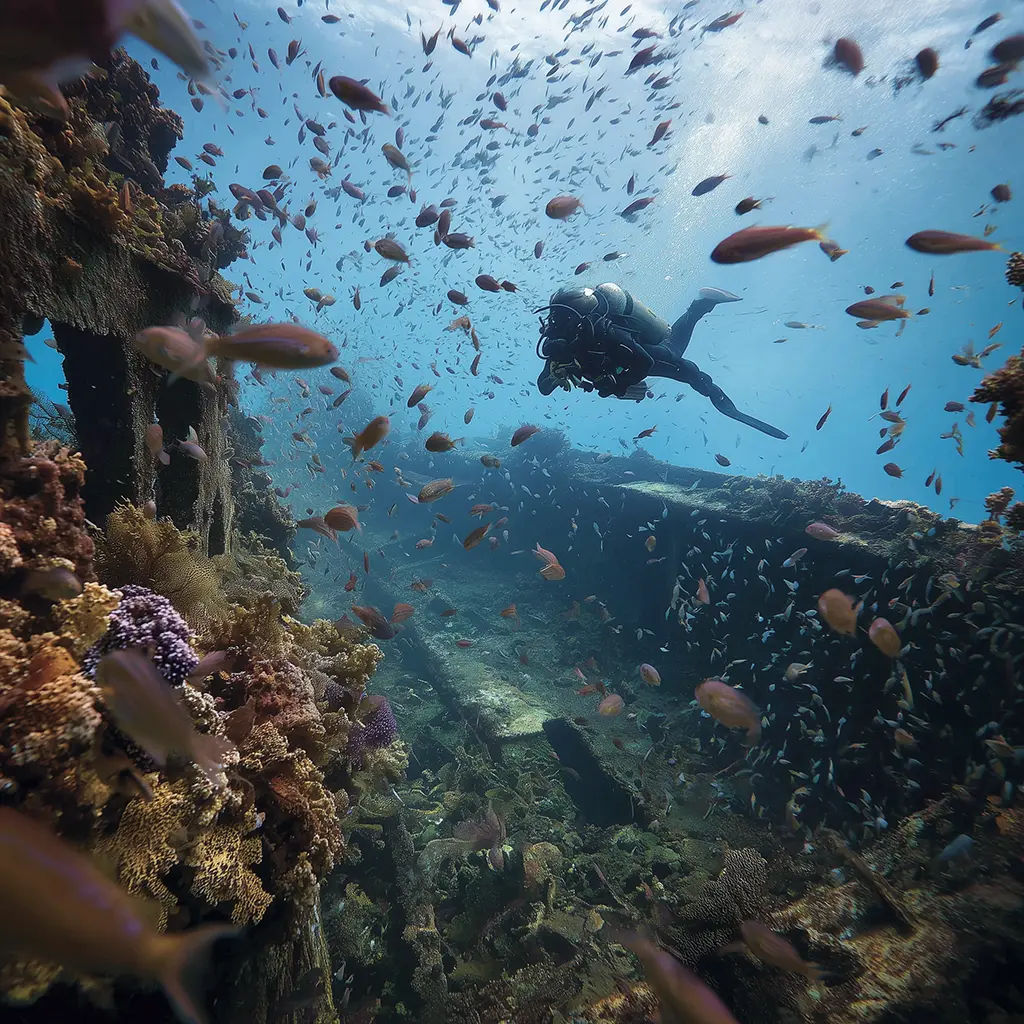
Dive Into Shipwrecks and Whale Sharks
Dive into wrecks and swim with whale sharks, zipline over forests, and surf in Siargao. If you’re a thrill-seeker searching for adventure in the Philippines, you’re in the right place.
Whether you’re exploring shipwrecks in Coron or hiking up Mt. Pulag to watch the sunrise above the clouds, the Philippines offers a non-stop adrenaline ride. If you’ve never breathed through a snorkel while trying not to squeal underwater, you haven’t lived.
Surf, Hike, Zipline – Choose Your Flavor of Adrenaline
Surf’s up in Siargao, the surfing capital of the country. Want mountain vibes instead? Hike up Mt. Pulag, where clouds gather beneath you like fluffy fog-blankets.
Or zipline across scenic mountains in Davao like you’re auditioning for an action movie. Your mom might be biting her nails back home, but you? You’re flying high and loving it.
6. Jeepneys: The Most Extraordinary Form of Public Transportation Ever
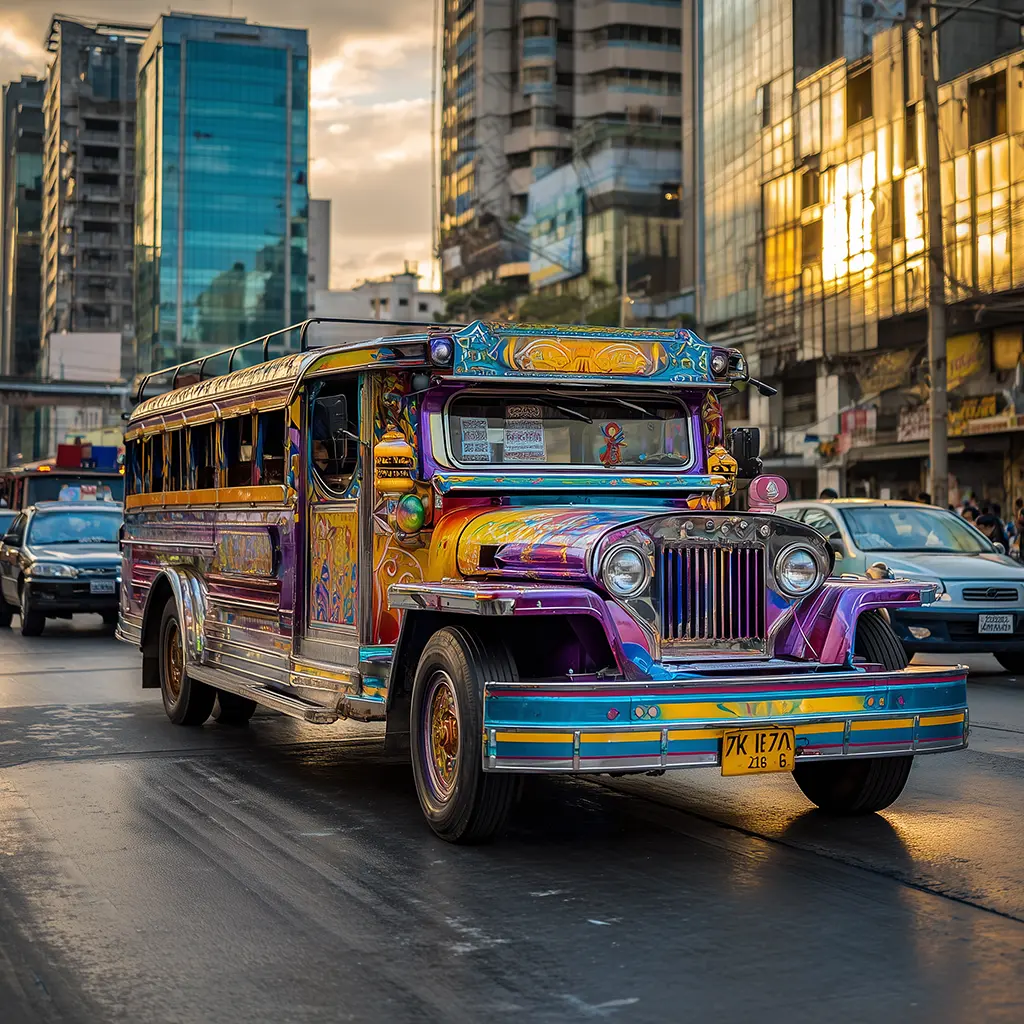
Art, Chaos, and Chrome All Rolled Into One
Jeepneys are iconic. Searching for jeepney experience in the Philippines will get you stories of color‑popping tunes and daring rides in classics repurposed from WWII jeeps.
Riding one isn’t just transport—it’s a rite of passage. Colors, chaos, and community all wrapped in one. Want to talk about a travel experience you’ll never forget?
Jeepneys are the fabulous unicorns of public transportation. Originally made from leftover American military jeeps, these rides have been pimped out to the MAX – think rainbow-colored bodies, chrome everything, religious slogans, disco lights, and sometimes even Spider-Man decals. They’re like a school bus and a nightclub had a glittery baby.
Riding a jeepney is an experience. You sit shoulder-to-shoulder with strangers, pass your fare to the driver like a trust exercise, and hang on for dear life as it weaves through traffic like it’s late for a wedding. There are no formal stops – you yell “Para!” (Stop!) when you want to get off. It’s part transportation, part survival game.
Surviving a Jeepney Ride: A Rite of Passage
Want to feel like a local, truly? Master the jeepney system. First, figure out if it’s going your way (ask three people to be sure). Then hop in, crouch (they’re not made for tall folks), and enjoy the ride.
Oh, and bring change. Handing a P100 bill for a P9 fare is the public transport equivalent of ordering a single donut with a $100 bill – you’ll get “the look.” But hey, after a few rides, you’ll be riding jeepneys like a pro and probably even adopting a slightly dramatic flair as you yell “Para po!”
7. Festivals That Make Mardi Gras Look Like a Nap
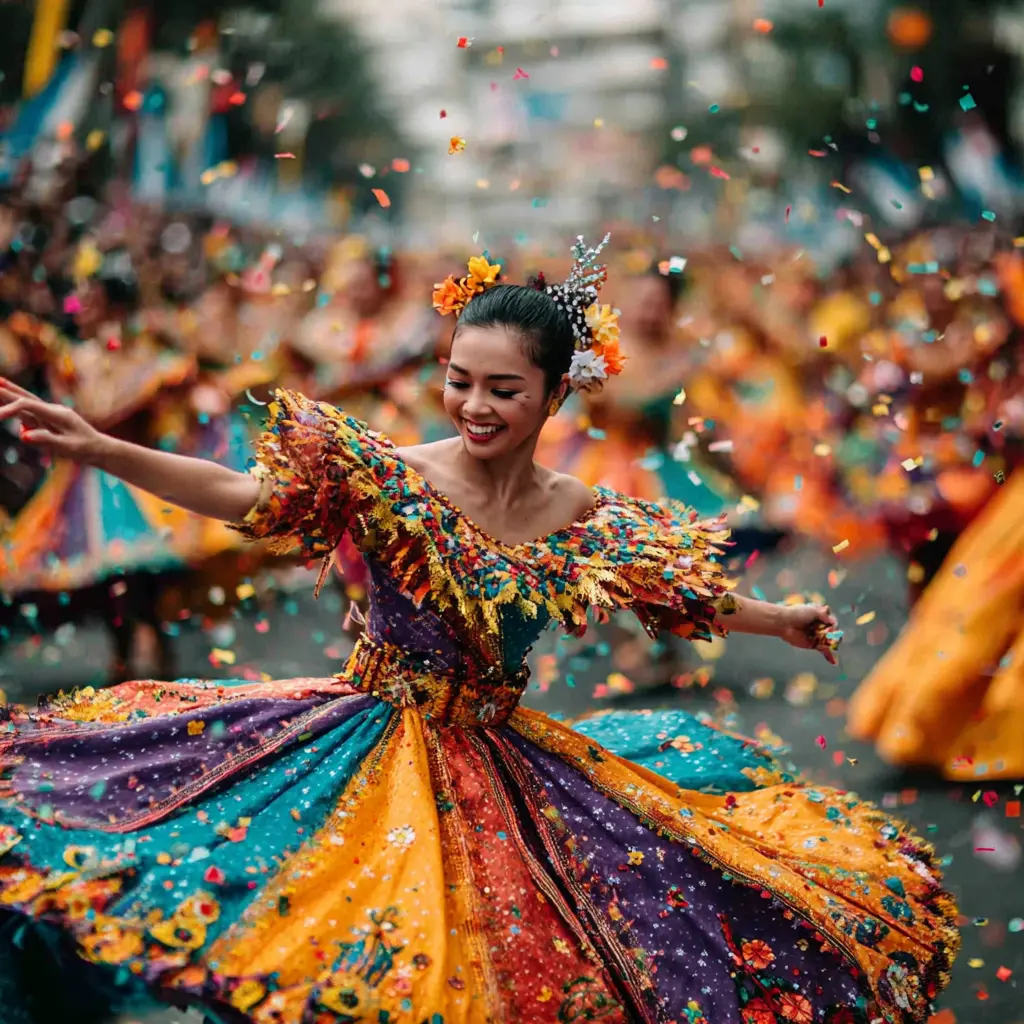
Sinulog, Ati-Atihan, and MassKara – Party Central
If you’re exploring the Philippines festivals 2025, you’re in for a ride. Sinulog, Ati‑Atihan, and MassKara turn towns into dance floors bursting with color, music, and sequins.
These festivals are legendary, mixing culture, confetti, and chaos in a way no other destination can match. Ready to jump into a street party where everyone’s a performer? These events are a significant draw in a Philippines travel guide.
Filipinos don’t just throw parties. They throw festivals that make Mardi Gras look like a lazy Sunday brunch. Let’s start with Sinulog in Cebu – a weeklong explosion of street dancing, religious parades, and enough face paint to make a Crayola factory jealous.
Then there’s Ati-Atihan in Kalibo, where everyone dresses up in tribal wear, bangs drums until the Earth vibrates, and yells “Hala Bira!” for reasons nobody explains but everyone embraces. And the MassKara Festival in Bacolod? Think smiling masks, neon everything, and parades that look like Cirque du Soleil met a dance club.
Costumes, Chaos, and Confetti Showers
These festivals are more than just parties – they’re full-blown sensory overloads. Locals and tourists alike dance in the streets, bathe in confetti, and probably lose their voices from too much karaoke (yes, there’s always karaoke). It’s a chaotic, colorful, heart-thumping good time.
If you ever wanted to wear a sequined costume in public while eating grilled meat on a stick and being sprayed with beer, this is your moment.
8. Nature’s Greatest Hits Compilation
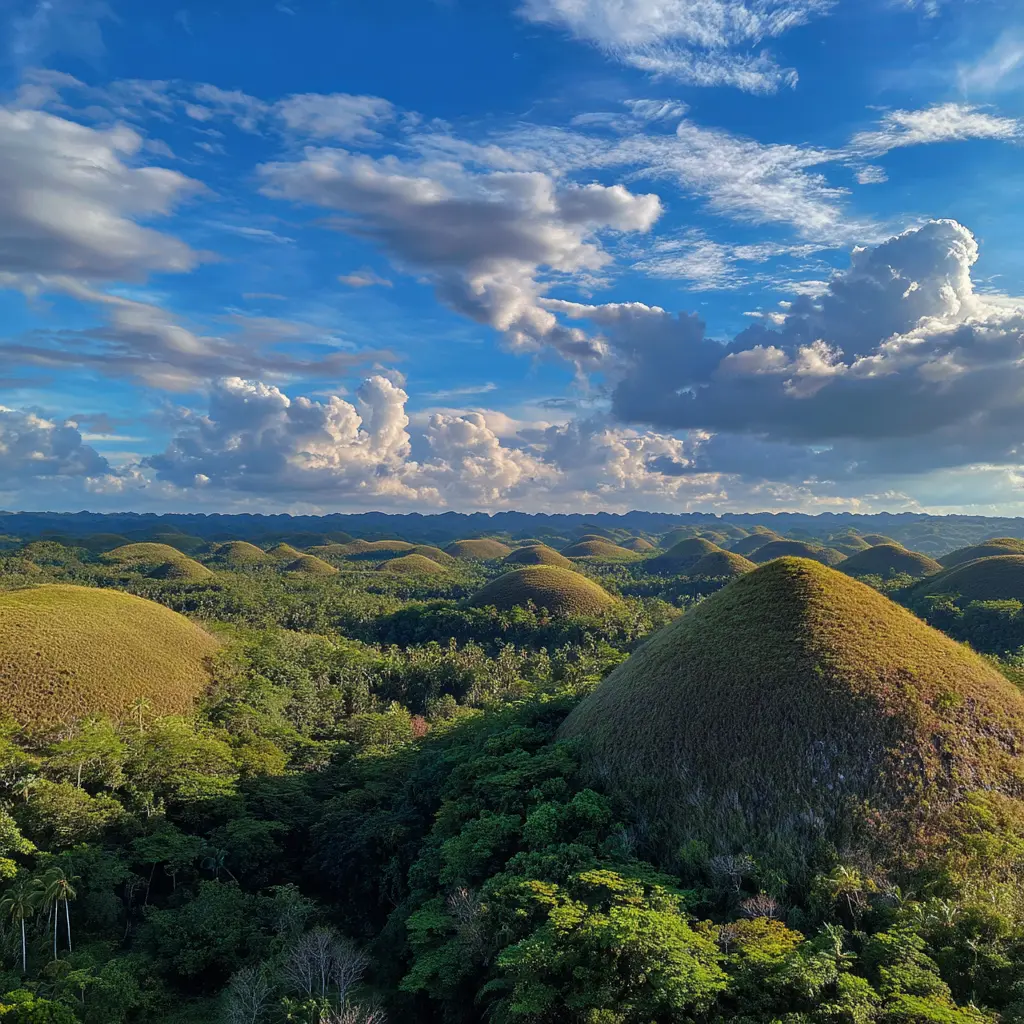
Chocolate Hills: They’re Not Edible, But Still Sweet
From the Philippines’ most beautiful places, such as Chocolate Hills, to the Puerto Princesa Underground River, nature is showing off.
Add in tarsiers (adorable mini primates that make Yoda look large). Don’t miss the chance to see the tarsier. There are also hidden lagoons tucked in limestone cliffs, and you’ll wonder if Mother Nature had coffee when she designed this place.
Speaking a little more about the Chocolate Hills in Bohol, 1,200+ cone-shaped hills turn brown during the dry season and look like a giant box of Hershey’s Kisses was dropped from the sky. Spoiler: they’re not made of chocolate (we checked), but they’re still one of the most bizarre and beautiful natural formations you’ll ever see.
Underground Rivers and Tarsiers (AKA Tiny Yoda Cousins)
Over in Palawan, you’ll find the Puerto Princesa Underground River – a UNESCO World Heritage Site that’s a boat ride through a massive limestone cave. It’s got cathedral-sized caverns, sparkly rock formations, and a certain “what-if-we-get-stuck-here-forever” vibe that makes it thrilling.
And yes, the tarsier deserves another shout-out. These mini creatures are adorably awkward, fiercely private, and one loud noise away from existential crisis. You’ll love them.
9. English Is Widely Spoken – No Charades Needed

Conversations Without Google Translate
One of the coolest reasons to visit the Philippines: most people speak English fluently. You can chat, ask for directions in a clear voice, or ask “where’s the CR?” without drawing blank stares.
Plus, Taglish, the local mix of Tagalog and English, will make you feel like a linguistic ninja once you pick up phrases like “Salamat po!” and “Kain na tayo!”
No phrasebooks, no awkward pantomimes, no Google Translate disasters. Just easy conversations and maybe the occasional Tagalog slang (which you’ll start using unironically).
Taglish: The Best of Both Linguistic Worlds
You’ll also hear “Taglish” – a mix of Tagalog and English that’s verbal jazz. One sentence might go: “I was walking sa mall tapos I saw him! As in!” It’s part charming, part chaotic, and all Filipino.
Try picking up a few Tagalog phrases – “Salamat” (thank you), “Saan ang CR?” (Where’s the bathroom?), and of course, “Kain na tayo!” (Let’s eat!) Bonus points for saying “po” (a polite word) after everything. People will love you for it.
10. Budget-Friendly Travel to the Philippines—Your Wallet Will Love This
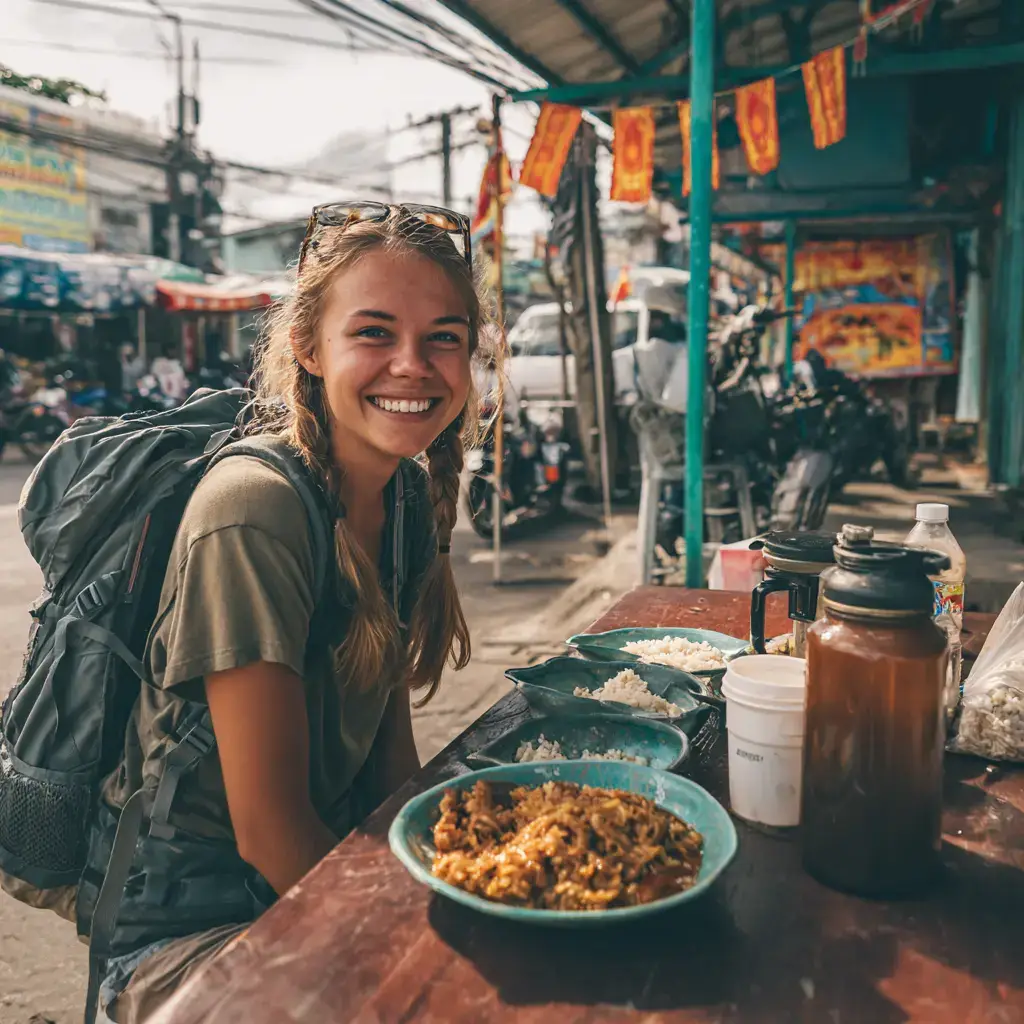
Luxury Living for Less
Thinking, “Is the Philippines worth visiting on a budget?” Absolutely. Accommodation, food, transport, and activities are inexpensive and of high value.
- Beachfront stays for $30/night
- Local meals for under $5
- Jeepney rides for pennies
This is living like a king (or queen) on a backpacker’s budget. That’s why cheap travel in the Philippines is an unbeatable draw.
You want those Instagram-perfect Island villas with hammocks and an infinity pool? Done. Want to splurge on island-hopping tours or diving trips? You still won’t break the bank. It’s like the VIP experience – but without needing to sell a kidney.
Tips for Ballin’ on a Budget in the Philippines
- Eat local: Carinderias (local eateries) serve hot meals for pocket change. Try everything. Twice.
- Use public transport: Jeepneys, buses, tricycles – they’re cheap and fun, especially if you like a bit of chaos.
- Travel off-season: May to November is less crowded and more affordable (pack a raincoat).
- Bargain wisely: Haggling at markets is part of the culture. Just do it with a smile.
- Group activities: Split tour costs with fellow travelers and make instant friends.
Your wallet will thank you. So will your future self, scrolling through those vacation photos, cocktail in hand, remembering you did it all for under $40 a day.
Conclusion

Going back to the beginning, ‘Why visit the Philippines?’ Because you get world-class beaches, incredible locals, adventurous activities, and unforgettable food—all at prices that make sense. This is your Philippines travel guide in action: fun, authentic, and convincing.
If you’ve ever wondered why the Philippines should be your next travel destination, this article just gave you ten answers. Spoiler: you’re already packing.
Between the 7,641 islands (seriously, who counted them all?), the powdery beaches that make Instagram filters cry, and the heart-melting hospitality of the Filipino people, this place isn’t just a destination – it’s a vibe. It’s that unforgettable tropical fling you’ll be texting months after you’ve left. It’s coconut drinks at sunset, spontaneous karaoke battles, and jeepney rides that double as rollercoasters.
Whether you’re a thrill-seeking adrenaline junkie, a beach bum with a tan budget, or just a lost soul looking for the kind of vacation that leaves you laughing in flip-flops, the Philippines has got you covered.
Pack your bags. Charge your phone. Clear your camera roll. Because the only thing you’ll regret about going to the Philippines… is not going sooner.
FAQs
1. Is it safe to travel to the Philippines as a solo traveler?
Absolutely—especially in major tourist areas like Cebu, Palawan, and Boracay. Use common sense, keep your valuables close, and you’ll be fine.
2. What’s the best time to travel to the Philippines?
For sun lovers, December through May is ideal. January–March wins for perfect weather and festival season, plus a lower chance of typhoons.
3. Do U.S. Passport holders need a visa?
Nope—tourists from the U.S., Canada, the EU, and several others get a 30-day visa-free. Extensions are doable too.
4. What should I pack for a Philippines trip?
Bring swimwear, light clothes, reef-safe sunscreen, flip-flops, insect repellent, a power bank—for those epic sunset shots—and a healthy appetite.
5. Is Wi-Fi reliable in the Philippines?
In big cities? Mostly yes. On remote islands? Let’s say you’ll have more bars at the beach than on your phone. It’s a great excuse to go full digital detox—or to pretend you “couldn’t respond to work emails” (wink). Pro tip: Grab a pocket Wi-Fi or a local SIM card for smoother surfing.
6. How’s the nightlife in the Philippines?
Let’s say this country can party. Whether it’s beach raves in Boracay, speakeasy bars in Manila, or island-style reggae nights in Siargao, you’re in for a good time. And yes, expect karaoke. Everywhere. Your mission: sing “Total Eclipse of the Heart” at least once.
7. What souvenirs should I bring back from the Philippines?
Skip the shot glasses and go for real Philippines travel guide gold: dried mangoes, handmade crafts, barako coffee, local rum, and maybe a ukulele if you’re feeling musical. Don’t forget pasalubong (gifts) for friends and family—because sharing is caring (and culturally expected).
Other Articles that may be of Interest
You may also find the following articles interesting.
- Affordable Luxury in the Philippines: The Ultimate Budget Travel Guide
- Inside the Colorful Heart of Filipino Heritage
Suggestions For Lodging and Travel
Lodging is widely available throughout the Philippines. However, you may want to consider getting assistance booking tours to some of the Philippines’ attractions. I’ve provided a few local agencies that we’ve found to be very good for setting up tours. For transparency, we may earn a commission when you click on certain links in this article, but this doesn’t influence our editorial standards. We only recommend services that we genuinely believe will enhance your travel experiences. This will not cost you anything, and I can continue to support this site through these links.
Local Lodging Assistance
- Guide to the Philippines: This site specializes in tours throughout the Philippines, offering flexibility in scheduling and competitive pricing. I highly recommend them for booking local arrangements for a trip like this one. You can book flights and hotels through the Expedia link provided below.
- Hotel Accommodations: I highly recommend The Manila Hotel for a stay in Manila. I stay here every time I travel to the Philippines. It is centrally located, and many attractions are easily accessible from there. Intramuros and Rizal Park are within walking distance. I have provided a search box below for you to use to search for hotels (click on “Stays” at the top) or flights (click on “Flights” at the top). This tool will provide me with an affiliate commission (at no additional cost to you).
- Kapwa Travel is a travel company focused on the Philippines. It specializes in customizing trips to meet customers’ needs.
- Tourismo Filipino is a well-established company that has been operating for over 40 years. It specializes in tailoring tours to meet customers’ needs.
- Tropical Experience Travel Services – Tours of the Philippines: This company offers a range of tour packages, allowing you to tailor your trip to your preferences.
Lastly, we recommend booking international travel flights through established organizations rather than a local travel agent in the Philippines. I recommend Expedia.com (see the box below), the site I use to book my international travel. I have provided a search box below for you to use to search for flights (click on “Flights” at the top) or Hotels (click on “Stays” at the top). This tool will provide me with an affiliate commission (at no cost to you).